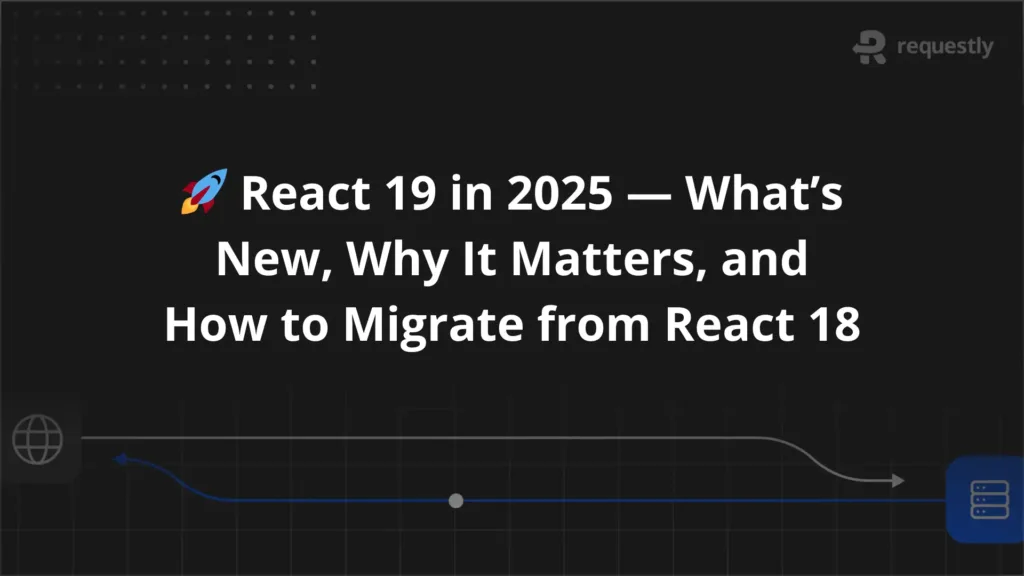How to Implement gRPC Mock Servers: Step-by-Step Tutorial


gRPC is widely used for building high-performance APIs with HTTP/2 and protocol buffers. Testing these services often requires simulating responses without depending on fully developed backends. gRPC mock server implementation enables developers and testers to validate service behavior, handle edge cases, and accelerate development.
This article provides a step-by-step guide, explores different implementation types, compares gRPC mocks with traditional API mocking, and highlights advanced strategies.
What is gRPC Mock Server Implementation?
A gRPC mock server is a simulated server that imitates the behavior of real gRPC services. It responds to client requests based on predefined rules or data without requiring the actual backend to be fully operational. Implementing such a server helps teams test client applications, validate request and response handling, and simulate different service scenarios efficiently.
The goal of the gRPC mock server implementation is not just to return static data. It focuses on mimicking realistic service behavior, including handling error conditions, streaming responses, and varying message payloads. This allows testing under controlled conditions and reduces dependency on other services during development and QA cycles.
Below are the key points to understand about the gRPC mock server implementation:
- Service Contract Focus: It adheres to the proto definitions, ensuring the mock responses match the expected schema.
- Controlled Response Simulation: Developers can simulate success, failure, or delayed responses to cover multiple scenarios.
- Stream Handling: Supports unary, client-streaming, server-streaming, and bidirectional streaming to replicate real service interactions.
- Test Isolation: Allows testing client logic independently without relying on live services.
- Rapid Development Feedback: Enables frontend and integration teams to progress while backend services are still in development.
Types of Implementations
gRPC mock servers can be implemented in multiple ways depending on the testing requirements, project complexity, and available tooling. Choosing the right type ensures efficient testing and realistic simulation of service behavior. Below are the main approaches used in practice:
- Static Mocking: Returns predefined responses based on the request type. Best suited for early-stage testing or simple client validation. For example, a static mock could return a fixed user profile whenever a GetUser request is received.
- Dynamic Mocking: Generates responses at runtime based on request data or parameters. Useful for testing conditional logic or multiple scenarios. For example, a dynamic mock could return different product recommendations depending on the request filters provided.
- Proxy-Based Mocking: Intercepts client requests and either returns a mock response or forwards the request to a live service. Helps combine partial real services with simulated ones. For example, a proxy-based mock could forward read requests to the live service but simulate write requests during testing.
- Code-Generated Mocks: Uses gRPC proto files to generate server stubs that can be customized with test logic. Ensures strict adherence to service contracts and reduces manual coding errors. For example, a code-generated mock could create a server stub for a PaymentService and simulate payment failures to test error handling.
Why Use gRPC Mock Server Implementation?
The gRPC mock server implementation provides several advantages that go beyond simple testing. It helps teams manage dependencies, uncover issues early, and optimize development workflows. Below are the main reasons teams adopt gRPC mock servers:
- Accelerates Development: Frontend and integration teams can proceed without waiting for fully implemented backend services.
- Improves Test Coverage: Allows testing edge cases, error handling, and streaming scenarios that might be hard to reproduce with live services.
- Reduces Dependencies: Minimizes reliance on unstable or unavailable services during development and QA cycles.
- Supports Continuous Testing: Enables automated tests to run consistently with predictable responses.
- Cost Efficiency: Reduces resource usage by avoiding calls to live services, especially in large-scale or cloud-based environments.
gRPC Mock Server vs Traditional API Mocking
While both gRPC mock servers and traditional API mocks simulate backend services, there are key differences in their behavior, use cases, and technical implementation. Understanding these differences helps teams choose the right approach for testing and development.
Aspect | gRPC Mock Server | Traditional API Mocking |
Protocol | Uses HTTP/2 and protocol buffers, optimized for binary data and streaming | Typically uses HTTP/1.1 with JSON or XML payloads |
Message Handling | Supports unary, client-streaming, server-streaming, and bidirectional streaming | Usually handles simple request-response patterns only |
Schema Enforcement | Strictly adheres to proto definitions, ensuring messages match service contracts | Schema enforcement is often optional or manual |
Performance | Optimized for low-latency, high-throughput environments | Performance varies and it may not reflect real service behavior accurately |
Complex Scenarios | Can simulate dynamic responses, streaming, and error conditions realistically | Limited in simulating streaming or complex interactions |
Tooling & Setup | Often requires code generation from proto files and specific gRPC frameworks | Widely supported by generic API mocking tools with minimal setup |
Use Cases | Testing microservices, streaming clients, integration testing, and pre-backend development | Quick front-end testing, basic functional tests, and simple API validation |
Step-by-Step Guide to gRPC Mock Server Implementation
Implementing a gRPC mock server involves defining service behavior, setting up the server, and integrating it with client tests. Following a structured approach ensures consistency and maintainability. Below is a step-by-step guide to help teams implement a gRPC mock server effectively.
- Define Service Contracts: Start with your .proto files to identify all services, RPC methods, and message types. Ensure the proto definitions reflect the intended behavior for both normal and edge cases.
- Choose Implementation Type: Decide between static, dynamic, proxy-based, or code-generated mocks based on project requirements, complexity, and available tooling.
- Set Up the Mock Server Environment: Initialize a gRPC server using the language or framework of choice. Import generated stubs if using code-generated mocks.
- Implement Response Logic: Configure the server to return mock responses. For dynamic mocks, include conditional logic to simulate different scenarios. For streaming methods, implement correct message sequences to mirror real interactions.
- Integrate with Client Tests: Point the client application or test suite to the mock server. Validate that requests are correctly received and responses behave as expected.
- Handle Error and Edge Cases: Include logic to simulate failures, timeouts, or invalid responses to test client resilience.
- Run and Verify: Execute tests against the mock server. Ensure responses conform to the proto definitions and verify coverage for all scenarios.
Advanced gRPC Mock Server Implementation Strategies
Once basic gRPC mock servers are set up, advanced strategies can make testing more realistic, flexible, and maintainable. These strategies help simulate complex interactions, handle high-load scenarios, and integrate smoothly with CI/CD pipelines.
1. Parameterized Dynamic Responses
Dynamic mocks can generate responses based on incoming request data to simulate real-world variations. This allows testing conditional logic in client applications.
Example in Python using grpcio:
from concurrent import futures
import grpc
import user_pb2
import user_pb2_grpc
class UserServiceMock(user_pb2_grpc.UserServiceServicer):
def GetUser(self, request, context):
if request.user_id == 1:
return user_pb2.UserResponse(name="Alice", age=30)
else:
return user_pb2.UserResponse(name="Unknown", age=0)
server = grpc.server(futures.ThreadPoolExecutor(max_workers=10))
user_pb2_grpc.add_UserServiceServicer_to_server(UserServiceMock(), server)
server.add_insecure_port('[::]:50051')
server.start()
server.wait_for_termination()
2. Streaming Simulation
For services using server, client, or bidirectional streaming, it’s important to mock message sequences accurately. You can queue messages and send them at controlled intervals to replicate real-time streaming behavior.
3. Proxy and Hybrid Mocks
Combine live services with mocks to test partial systems. For instance, forward stable endpoints to the real service while mocking unstable or in-development services. This allows realistic integration testing without fully relying on all live services.
4. Fault Injection and Latency Simulation
Introduce artificial delays, errors, or network interruptions to test client robustness under adverse conditions. This ensures applications can gracefully handle timeouts, retries, or invalid data.
Example snippet to simulate latency:
import time
def GetUser(self, request, context):
time.sleep(2) # simulate 2-second delay
return user_pb2.UserResponse(name="DelayedUser", age=25)
5. Centralized Mock Management
For large projects, maintain mock definitions in a separate repository or configuration files. This allows teams to update responses without touching server code and ensures consistency across environments.
By applying these strategies, gRPC mock servers can replicate realistic service behavior, test edge cases, and integrate seamlessly into CI/CD pipelines, making them highly effective for advanced testing scenarios.
How Requestly Helps with gRPC Mock Server Implementation
While gRPC mock servers can be built manually, maintaining them for multiple services and scenarios can be time-consuming. Requestly offers capabilities that make managing and modifying gRPC mock server behavior faster and easier, especially in collaborative environments.
- Response Interception and Modification: Requestly can intercept gRPC calls and alter responses without changing server code, allowing quick adjustments for testing new scenarios.
- Conditional Mocking Rules: Define rules to return specific responses based on request patterns or parameters, reducing the need to hardcode logic in the mock server.
- Remote Rule Management: Update mock configurations centrally so that all team members get the latest mock behaviors without local code changes.
- Integration with Live Services: Forward certain gRPC calls to live endpoints while mocking others, enabling hybrid testing setups.
- Rapid Experimentation: Quickly create and switch between different test conditions without redeploying the mock server.
Conclusion
A gRPC mock server enables testing client applications, simulating varied responses, and covering edge cases without relying on live backends. It supports everything from static responses to streaming interactions, helping teams reduce dependencies and identify issues earlier in development.
Requestly enhances this process by intercepting gRPC calls, modifying responses, and managing mock rules without redeployment. Its conditional logic, ability to route specific requests to live services, and centralized configuration make adapting mocks faster and easier.

Contents
Subscribe for latest updates
Share this article
Related posts






















